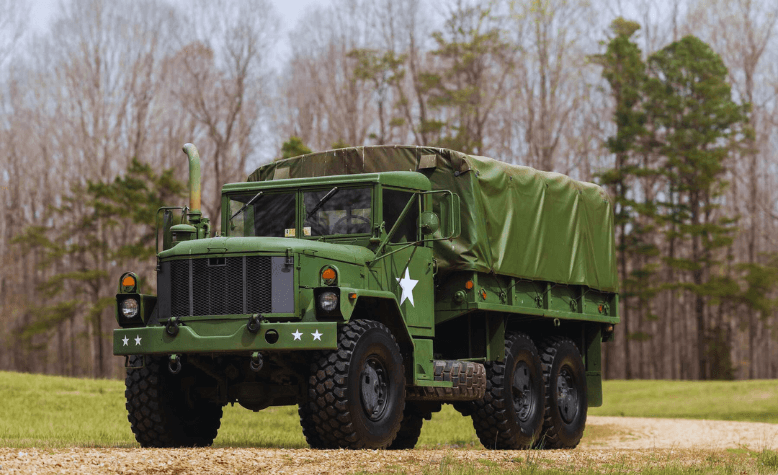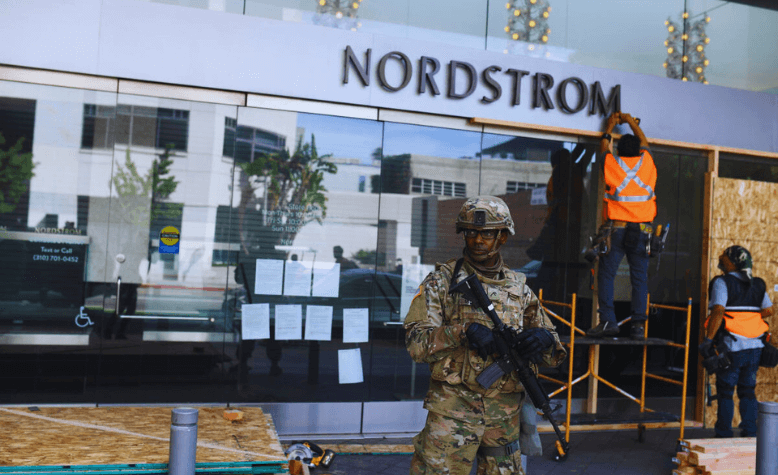The Evolution of the Military Flattop Haircut

Imagine a time when military personnel would sport cascading locks or elaborate hairstyles. Now fast forward to the present day, where a short, sleek and no-nonsense haircut reigns supreme among servicemen and women: the military flattop.
This iconic hairstyle has come a long way in its evolution, transitioning from a practical choice for combat to a symbol of discipline and professionalism. Join us as we explore the fascinating journey of the military flattop haircut, tracing its roots and uncovering its significance in the armed forces.
Early Origins
The roots of the military flattop haircut can be traced back to ancient times, where short, practical hairstyles were preferred among warriors and soldiers. In civilizations such as Ancient Egypt, Greece, and Rome, soldiers often sported shorter styles to enhance their combat effectiveness. These early origins laid the foundation for the military-inspired hairstyles we see today.
Greek and Roman Influence
Greek and Roman cultures had a significant influence on the development of the military flattop haircut. Both armies recognized the importance of practicality and hygiene, leading to the adoption of short hairstyles. These cultures believed that shorter hair reduced the risk of lice and made it easier for soldiers to maintain cleanliness in battle conditions. The military ethos of these ancient civilizations heavily influenced later military organizations and their grooming standards.
Evolution of the Style
During the Middle Ages and Renaissance, military organizations across Europe continued the tradition of donning shorter hairstyles. Knights and soldiers often wore their hair cropped close to the head, making it easier to wear helmets and reducing vulnerability in close combat situations. This practical approach to grooming ensured that soldiers could perform their duties effectively while maintaining a professional appearance.
Adoption by Civilian Populations
As time went on, the military flattop haircut became more than just a functional hairstyle for soldiers. It gradually gained popularity among civilians, reflecting a desire for a clean, low-maintenance look. The simple yet stylish nature of the flattop appealed to people from all walks of life, and soon it became a symbol of discipline, professionalism, and masculinity.
World Wars and Popularity Boom
The First World War played a crucial role in popularizing the military flattop haircut. With the advent of trench warfare, soldiers needed a hairstyle that would not interfere with their helmets and gas masks. The flattop, with its short and even length, became the go-to choice for soldiers on the front lines. The practicality and functionality of the flattop during this challenging period solidified its status as a staple military hairstyle.
Influence of World War II
World War II further propelled the popularity of the military flattop haircut. Soldiers, both in the European and Pacific theaters, found the style essential to their combat readiness. Additionally, the clean-cut image conveyed by the flattop resonated with civilians on the home front who sought to show their support for the troops. The war effort elevated the flattop to iconic status and cemented its place in history.
Hollywood and Popular Culture
Following the end of World War II, the military flattop haircut entered the realm of popular culture. Hollywood films, featuring leading men with sharp military-style haircuts, influenced fashion trends and popularized the look among civilians. The rugged charm of actors like Steve McQueen and Clint Eastwood, with their iconic flattop hairstyles, made the style even more desirable. The cultural impact of these influential figures on the perception of military-inspired hairstyles cannot be overstated.
Post-War Decline
As societal norms and values shifted in the post-war era, longer hairstyles began to gain prominence. The rebellious counterculture of the 1960s and 1970s challenged traditional grooming standards, favoring more free-flowing, unorthodox looks. Along with this cultural shift, the popularity of the military flattop haircut declined. It became associated with the rigid conformity of the past, losing its appeal among those seeking a more individualistic identity.
Embracing Longer Hairstyles
In the wake of the flattop’s decline, longer hairstyles, such as the shag and the afro, took center stage. These looks represented a break from established norms and mirrored the changing dynamics of a more liberated society. The military flattop, once synonymous with discipline and order, no longer held the same appeal. However, the iconic style would not remain in the shadows for long.
Resurgence and Modern Variations
While the military flattop haircut may have lost some popularity in civilian circles, it remains a prevalent style within the armed forces. Military organizations worldwide continue to embrace the practicality and professionalism associated with the flattop. The hairstyle ensures that soldiers present a uniform appearance while maintaining ease of maintenance in demanding environments.
Popularity among Celebrities
In recent years, there has been a resurgence in the popularity of military-inspired haircuts in the entertainment industry. Numerous celebrities, such as David Beckham and Brad Pitt, have been spotted sporting modern interpretations of the flattop. This renewed interest has given the hairstyle a contemporary edge and a level of coolness that transcends its military origins.
Trends in Modern Styling
Contemporary variations of the flattop have emerged, catering to diverse style preferences and maintaining the haircut’s relevance in today’s fashion landscape. From the high fade flattop to the textured top variation, there are numerous options for those seeking a modern take on this classic haircut. The adaptability of the military flattop allows individuals to express their personality and adapt the style to their own unique tastes.
The Iconic Crew Cut
The crew cut, often associated with the military flattop family, is a timeless and classic haircut. It is characterized by short, evenly trimmed hair on the sides and back, gradually tapering up towards the crown. The top of the hair is left slightly longer, allowing for versatility in styling. This clean and structured look epitomizes professionalism and has been favored by men for generations.
Maintenance and Styling Tips
One of the reasons the crew cut remains popular is its minimal maintenance requirements. Regular trims are necessary to maintain the precise length, but styling is straightforward. A small amount of pomade or wax can be applied to add texture and hold to the hair.
The crew cut is incredibly versatile and can be adapted to various face shapes and hair types, making it a practical and stylish choice for many.
Timeless Appeal
The crew cut’s enduring popularity can be attributed to its timeless appeal. Whether worn for professional reasons or personal preference, the crew cut exudes confidence and sophistication. It is a versatile haircut that suits men of all ages and can be customized to reflect individual style preferences. The crew cut’s ability to stand the test of time cements its place as an iconic and enduring hairstyle.
The Induction Cut
The induction cut, commonly known as the “buzz cut,” holds immense military significance. It is the very first hairstyle a new recruit receives upon joining the military. The induction cut symbolizes the removal of individuality and the equalizing aspect of military service. By shaving the head to a uniform length all over, soldiers discard personal identity and embrace the collective identity of their unit.
Symbolism and Tradition
The induction cut carries with it a sense of tradition and symbolism. It signifies a rite of passage, marking the transition from civilian to soldier. The act of shaving the head represents a shedding of the old self and the acceptance of a new identity within the military community.
The induction cut fosters a sense of camaraderie and unity among recruits, reminding them that they stand shoulder to shoulder with their fellow service members.
Popular among New Recruits
While the induction cut is primarily associated with military training, it has also gained popularity among civilians, especially those seeking a low-maintenance and no-nonsense hairstyle. The buzz cut offers a practical solution for those with busy lifestyles and a desire for a clean, fuss-free look. Its simplicity and versatility have made it a favored choice for individuals of all backgrounds.
The High and Tight
The high and tight haircut has its roots firmly planted in military tradition. This hairstyle originated in the United States Marine Corps during World War II, where it was specifically crafted to meet the demands of combat. The high and tight features closely cropped sides and back, while leaving more length and volume on top. Its clean lines and defined contrast became a symbol of military discipline and toughness.
Typical Characteristics
The high and tight is characterized by its distinct taper on the sides and back, blending seamlessly into longer hair on top. The transition from short to long creates a sharp contrast that highlights the top section of hair. This hairstyle offers versatility in terms of how much length is left on top, allowing individuals to customize it to their desired look.
Variations and Customizations
Over the years, various iterations of the high and tight have emerged, catering to personal style preferences and trends. Some choose to keep the top section shorter, while others opt for more length and volume.
Additionally, individuals can experiment with different fade styles, such as the skin fade or undercut, to add a contemporary touch. The high and tight, with its adaptability and strong military heritage, continues to maintain its popularity among those seeking a bold and no-nonsense style.

The Burr Cut
The burr cut, also known as the “butch cut,” gained prominence during World War II as a practical choice for soldiers in the field. Similar to the buzz cut, the burr cut involves trimming the hair to an even length all over. Its name derives from the use of electric clippers, which produce a sound similar to the burr of a grinding wheel. This low-maintenance hairstyle ensured soldiers remained well-groomed despite the harsh conditions of war.
Advantages and Disadvantages
One of the notable advantages of the burr cut is its minimal upkeep. The short length reduces the need for regular haircuts, making it a convenient choice for those with busy schedules. Additionally, the burr cut requires minimal styling, saving time and effort.
However, some may find the short length less versatile compared to other military-inspired haircuts. Those seeking greater styling options may prefer hairstyles that provide more length and texture.
Minimal Maintenance
The burr cut’s appeal lies primarily in its ease of maintenance. With its extremely short length, there is little to no need for styling products or complicated grooming routines. A simple wash-and-go approach is sufficient to maintain the burr cut’s clean and sharp appearance. This simplicity and practicality make the burr cut a popular choice among individuals who prioritize a no-fuss hairstyle.
Conclusion
The military flattop haircut, with its rich history and evolution, continues to hold significant cultural and symbolic value in the present day. As a testament to its timeless appeal, variations of the flattop persist both within military organizations and civilian circles. Its influence has transcended time and geographical boundaries, illustrating the enduring relevance of military-inspired grooming.
Impact on Military and Cultural Identity
The military flattop haircut not only serves as a practical hairstyle within military organizations but also plays a crucial role in shaping cultural identity. It represents discipline, professionalism, and a commitment to service. The symbolism and tradition associated with military-inspired hairstyles contribute to a sense of unity and camaraderie, both among soldiers and civilians who adopt these styles.








